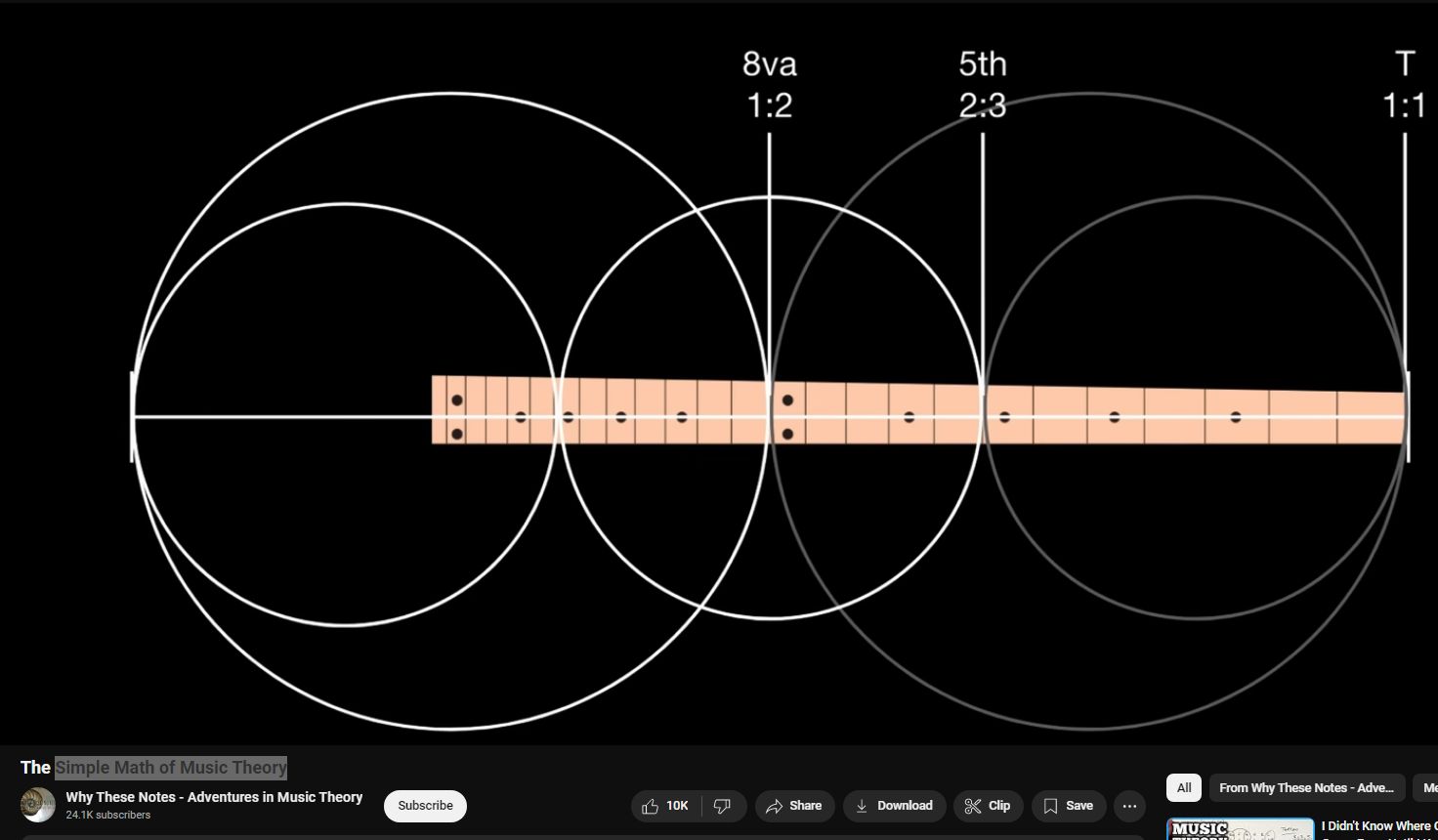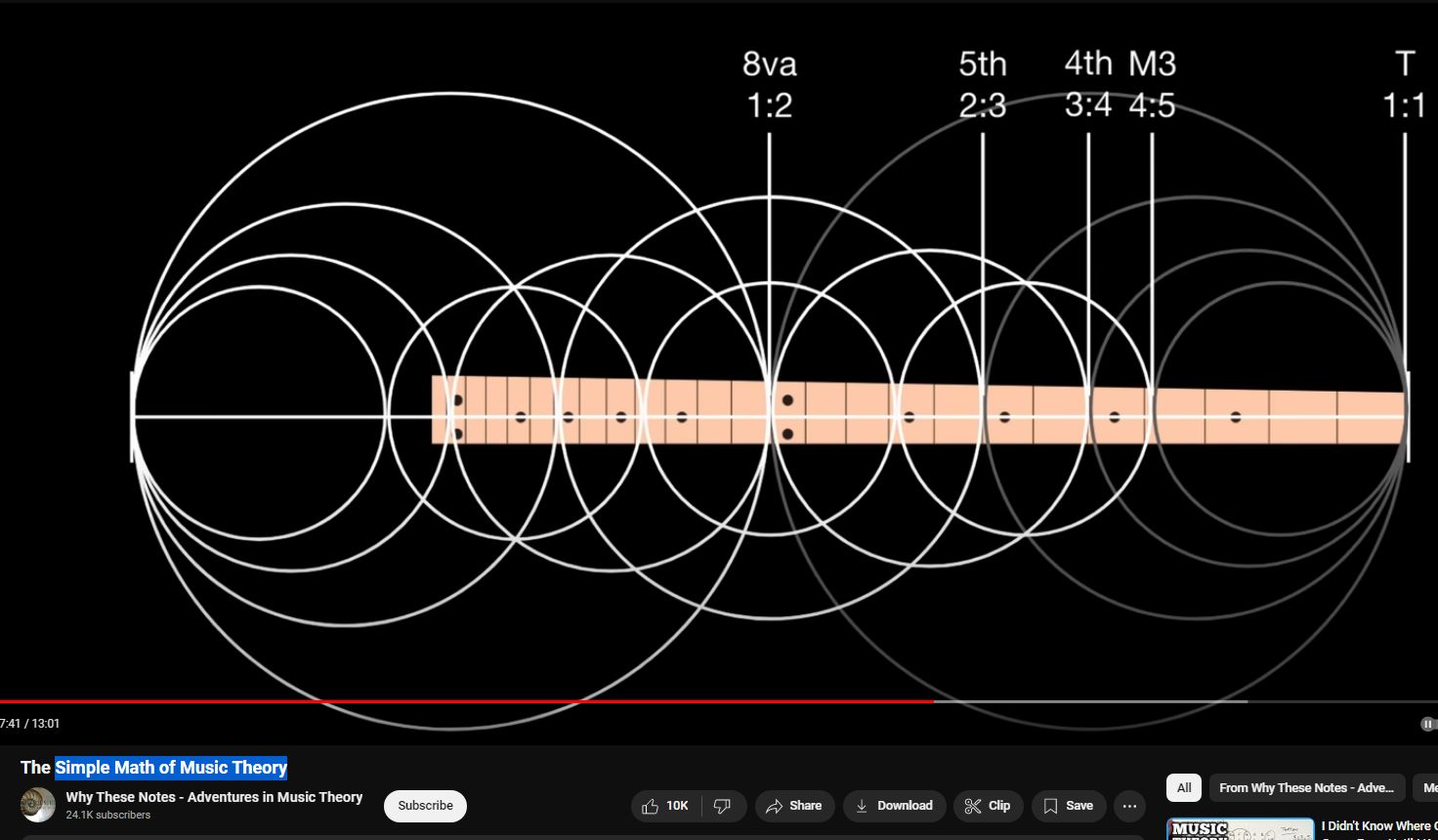Simple Math of Music Theory

The math of music theory is surprisingly simple yet deeply fundamental to understanding how music works. Here’s a straightforward breakdown:
1. Frequencies and Octaves
- Doubling the frequency moves a note up an octave.
- Example: A note at 440 Hz (A4) will have its octave at 880 Hz (A5).
- The division of an octave into 12 equal parts (in Western music) creates the 12-tone equal temperament system.
2. Intervals and Ratios
- Intervals (distances between notes) are based on frequency ratios:
- Octave = 2:1 ratio
- Perfect fifth = 3:2 ratio
- Perfect fourth = 4:3 ratio
- Major third = 5:4 ratio
- Minor third = 6:5 ratio
3. The Chromatic Scale
- The chromatic scale divides an octave into 12 semitones.
- Each step in the chromatic scale increases the frequency by the 12th root of 2 (approximately 1.05946).
- Formula: ( f_n = f_0 \times (2^{1/12})^n ), where ( f_n ) is the frequency of the ( n )-th note, and ( f_0 ) is the frequency of the starting note.
4. Circle of Fifths
- The circle of fifths is a way of organizing the 12 tones:
- Each step moves a perfect fifth up or down.
- This forms a cycle, connecting all the notes and keys.
5. Scales and Steps
- A major scale follows the pattern of whole and half steps:
( W-W-H-W-W-W-H ).
Example: C Major (C-D-E-F-G-A-B-C). - A minor scale has a different pattern:
( W-H-W-W-H-W-W ).
Example: A Minor (A-B-C-D-E-F-G-A).
6. Chords and Triads
- Chords are built by stacking notes based on intervals:
- Major triad: Root + Major Third + Perfect Fifth.
- Minor triad: Root + Minor Third + Perfect Fifth.
- Example: C Major (C-E-G), A Minor (A-C-E).
7. Rhythm and Time Signatures
- Rhythm divides time into equal parts:
- 4/4 time: 4 beats per measure, quarter note gets 1 beat.
- 3/4 time: 3 beats per measure, quarter note gets 1 beat.
- Note durations follow simple fractions:
- Whole note = 1 beat.
- Half note = ( 1/2 ) of a whole note.
- Quarter note = ( 1/4 ) of a whole note, and so on.
8. Harmonics
- A vibrating string or air column produces a fundamental frequency and overtones (harmonics).
- These harmonics follow a natural series: ( 1x, 2x, 3x, 4x, \ldots ).
Music theory’s mathematical foundation creates a framework for harmony, melody, and rhythm. The math ensures consistency and beauty across different pieces and styles of music!

Visited 2 times, 1 visit(s) today